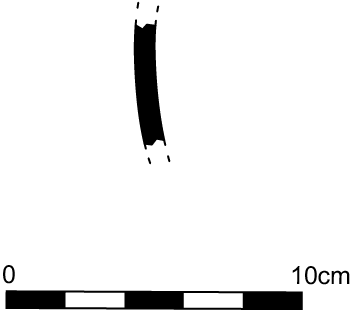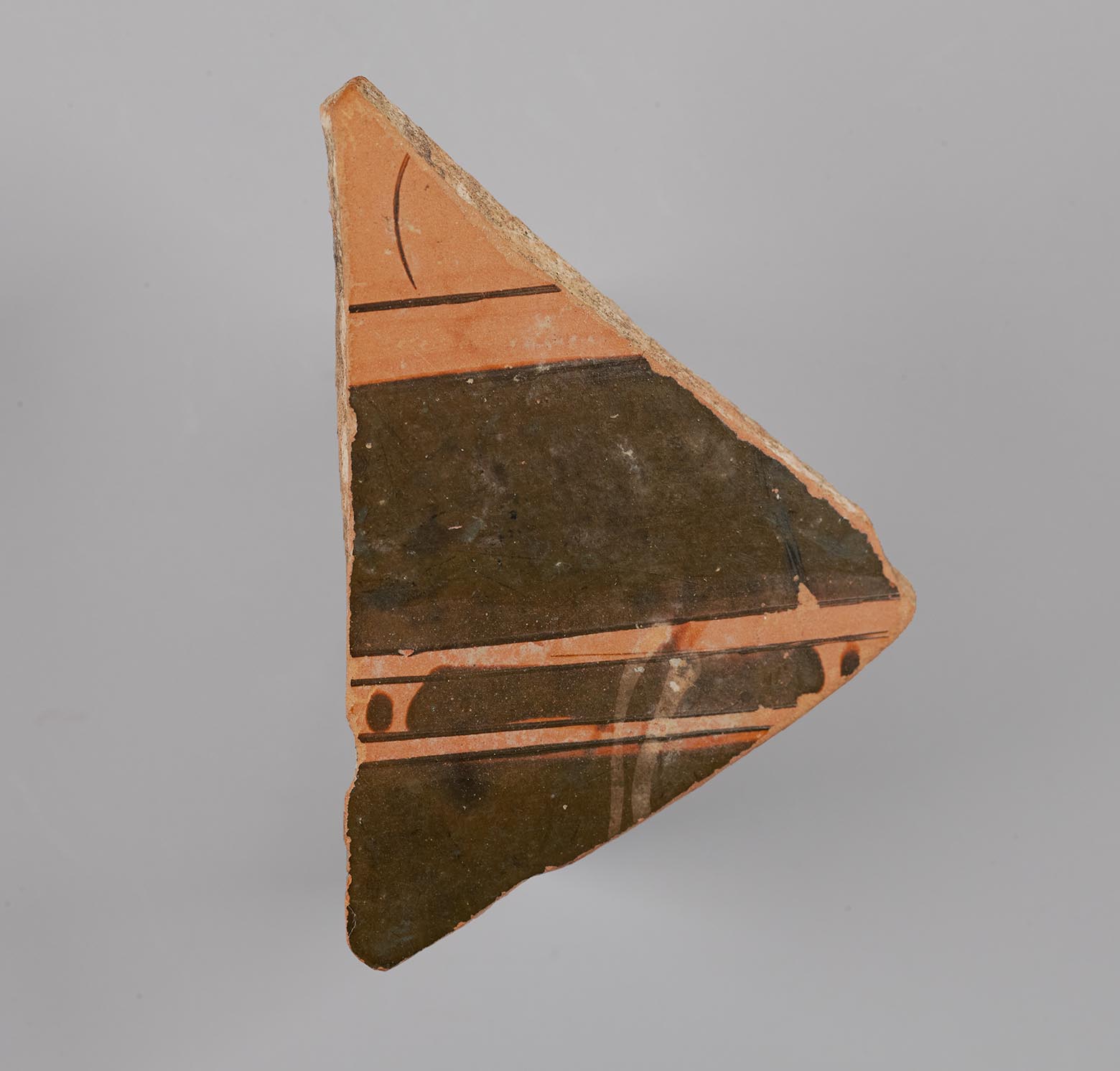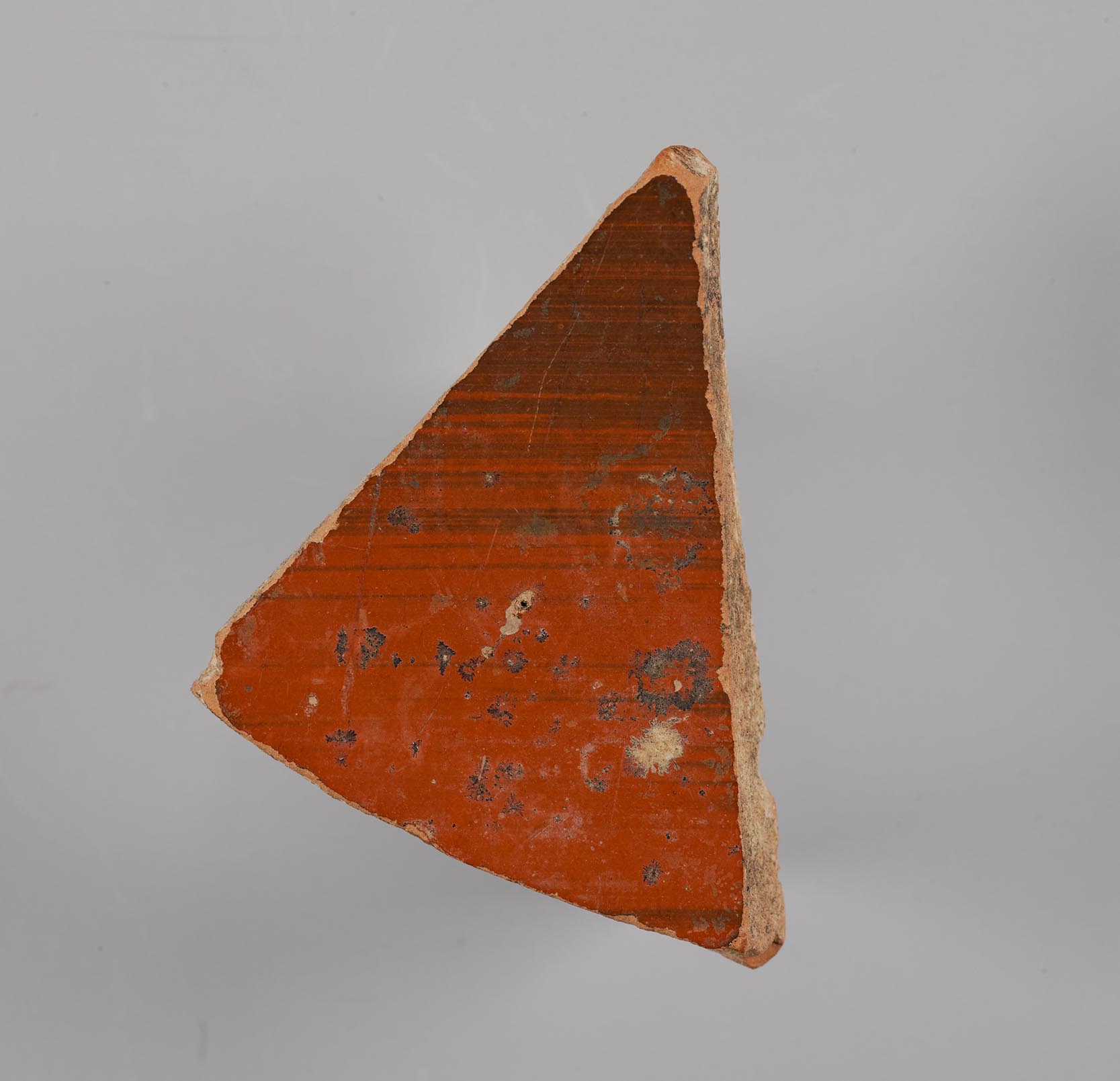Provenance
1973, bequest, J. Penrose Harland (NC) to Princeton University.
Shape and Ornament
Single fragment from the body of a krater of undetermined type. Interior black. No ornament preserved.

Subject
Symposion. At the top of the fragment is a small section of a kline (couch) and a single fold of the himation of a reclining banqueter. Below and in front of the kline is the middle of a tripod table from which hangs a wreath in added white, now worn.
Attribution and Date
Unattributed. Second half of the fifth century BCE.
Dimensions and Condition
4.1 × 2.8 cm; thickness 0.5 cm. Broken on all sides. Dull black gloss misfired streaky red on interior.
Technical Features
Relief contour. Accessory color. White: wreath.
Bibliography
Abbreviation: Princeton RecordRecord of the Princeton University Art Museum. (1942– ). 59 (2000): 91 [not illus.].
Comparanda
The thickness of the fragment and the slightly concave curvature suggest that the fragment came from a large krater, possibly a bell- or column-krater, which are the most common kraters decorated with sympotic scenes. The bell-krater becomes popular in the final third of the fifth century, while the column-krater is well represented throughout the century, but most popular in the first half. Sympotic scenes in general are most frequent in the Late Archaic period and the beginning of the fifth century but remain common throughout. The preserved figural drawing does not immediately suggest a particular date. The space between the top of the tripod table and the stretchers below is quite narrow and occurs on several vases from the second half of the fifth century: cf., by the Marlay Painter, Ullastret 3511 (CVA Ullastret 1 [Spain 5], 22, pl. 11.3; Abbreviation: BAPDBeazley Archive Pottery Database. http://www.beazley.ox.ac.uk 31311). The use of added white for florals hanging from the table occurs increasingly often on kraters from the late fifth century, although it is never common: cf., by the Meleager Painter, Los Angeles 50.8.39 (Abbreviation: ARV2J. D. Beazley. Attic Red-Figure Vase-Painters. 2nd ed. Oxford, 1963 1411.34; Abbreviation: BAPDBeazley Archive Pottery Database. http://www.beazley.ox.ac.uk 217952).

